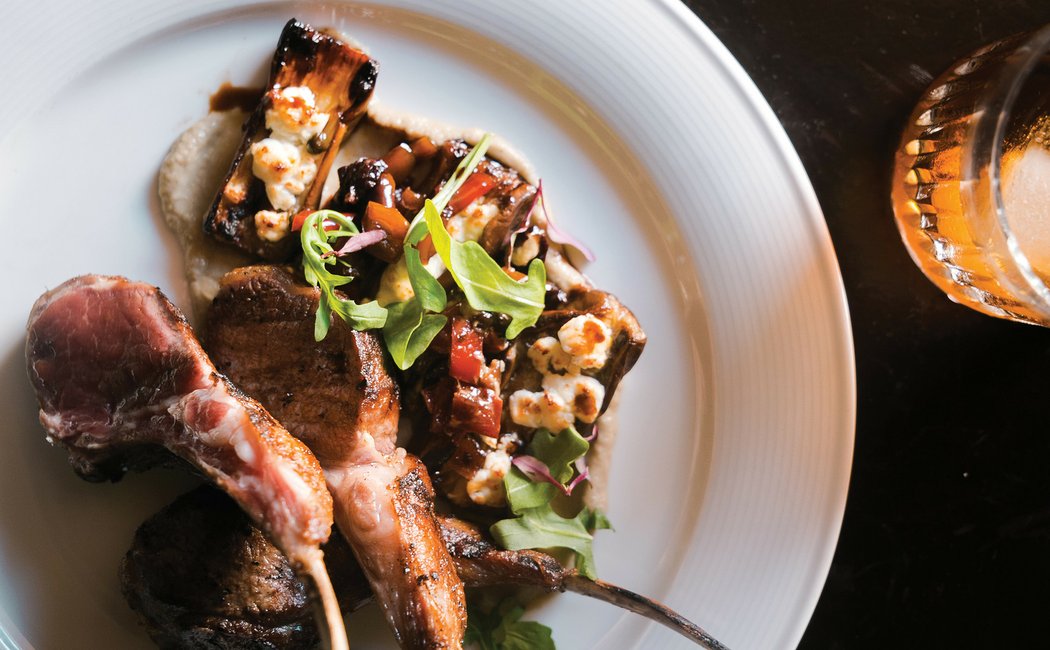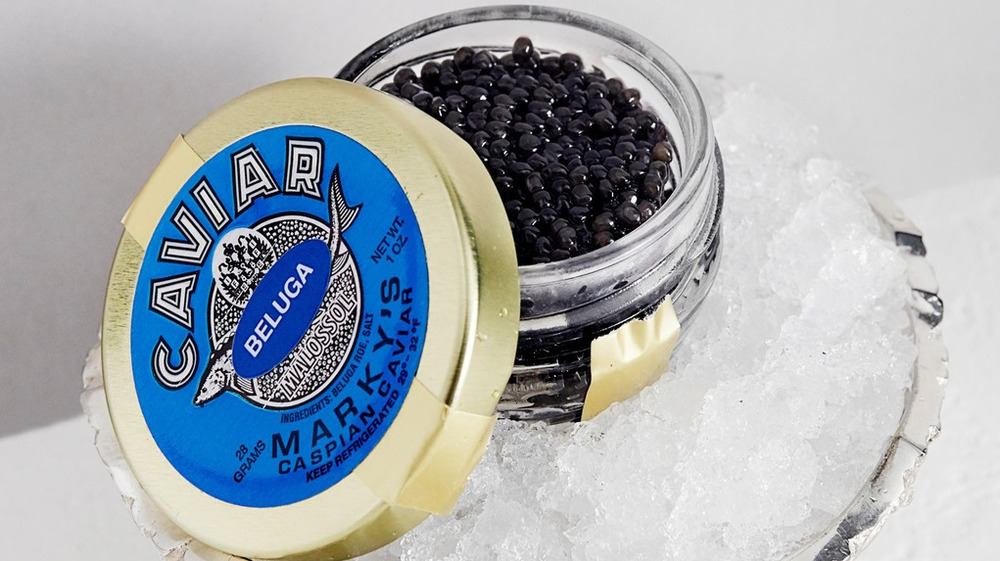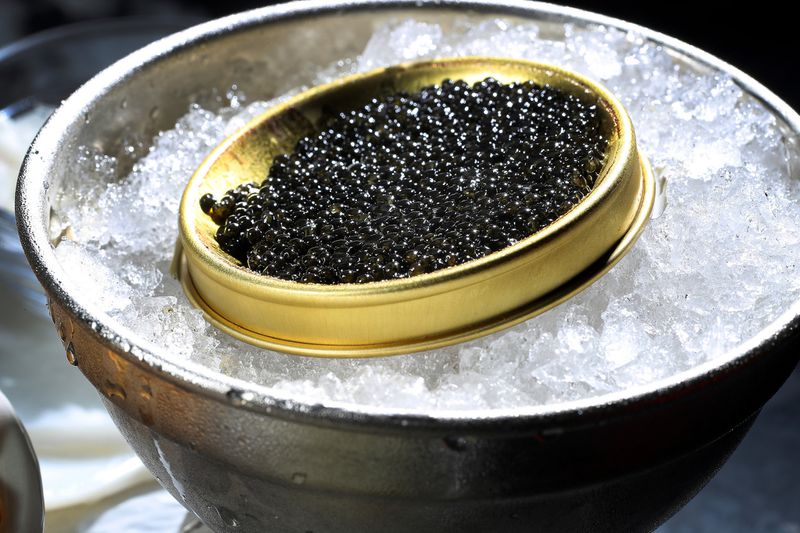Rosh Hashanah Celebration and Culinary Traditions
Rosh Hashanah falls this year on October 3rd and 4th though according to the traditions, the celebration should start at sunset of October 2nd. The evening before the holiday is considered as Rosh Hashanah Eve. During these several days the Jewish people all around the world are going to observe the coming of the Tishrei or Tishri month, which marks the beginning of the Jewish civil year.
It is the holy time of sincere praying, proclaiming repentance and asking forgiveness for the wrong deeds. Besides, the holiday always becomes a great occasion for every family to gather around the festive dinner table, welcome the new year, and wish each other new joy and happiness.
Rosh Hashanah dinner is also an important part of the celebration. The choice of products and dishes is made especially carefully and thoroughly, as they should keep and communicate the very essence and meaning of the holiday.
Here at Marky’s we have come up with some nice ideas and recipes for your celebration. You are welcome to explore the festive culinary Jewish traditions with us, and enjoy your holiday time even more by treating your nearest and dearest with delicious holiday meal.
A Few Definitions
Obviously, Rosh Hashanah means the Jewish New Year holiday. Sometimes it is also referred to as the Day of Remembrance or the Day of Judgment. According to what the Talmud says, on this day three books are opened to judge people for their good and bad deeds. The book of life is for the righteous, the book of death is for the most evil, while the third book is for those who are given the ten days’ time to repent until the final judgment is made. Hence the day of Rosh Hashanah is also marked as the first of ten High Holy Days or the Days of Awe, with their Hebrew name of Yamin Noraim. The last tenth day is the great holiday of Yom Kippur, which is also known as the Day of Atonement and considered to be the holiest Jewish feast.
Speaking about the origins of the name Rosh Hashanah, it is Hebrew and it literally means “the head of the year”. The English equivalent for “rosh” is “head”, the one for “shanah” is “year”, while “ha” corresponds to the English definite article.
There are a few different interpretations of what this idea might refer to. However, what all of them have in common is the claim that the way the beginning of the new year is celebrated in determines how happy, successful and abundant this year is going to be.
How Is Rosh Hashanah Celebrated?
Traditionally, the preparations for this holiday begin a month before the official date. The eve or Erev of the new year is dedicated to reciting prayers. For example, the Kiddush is always recited over a cup of wine before the further blessing over bread and starting the festive meal.
It should be highlighted that many of numerous old-time Rosh Hashanah traditions have not changed until nowadays, and are still followed by Jews worldwide. All these customs, rituals, symbols and motifs actually explain why this holiday is so important to observe, and determine the way how to celebrate Rosh Hashanah without forgetting the smallest detail.
Thus, one of the most significant regular customs is blowing the shofar. Made of the hollowed ram horn, it is considered one of the oldest instruments in the world. As it must be blown for one hundred of times during the two days of celebration, the Rosh Hashanah holidays is also called the Day of Sounding Shofar. This custom aims to remind people of the Bible story when a ram was sacrificed to God instead of Isaac, Abraham’s son.
Tashlich is another traditional ceremony of the Jewish new year. It is usually held on the first day of the celebration. The literal meaning of the word “tashlich” is “casting off” a person’s wrongdoings or sins. So the original Tashlich tradition is to toss crumbs of bread into the flowing water of a stream or river.
While these two rituals are almost always performed under the direction of synagogues, there are plenty of home and family customs as well. Most of them relate to giving gifts and setting the festive table.
Rosh Hashanah gifts may include festive kitchenware, decorative shofars and other festive items, kosher wine or honey, as well as various New Year gift baskets with kosher sweets.
Cooking and eating Rosh Hashanah food requires quite a lot of consideration.
- On the first night holiday meal must start from dipping apple slices and pieces of challah bread into honey. While honey symbolizes the hope for sweetness and smoothness in the new year, round challah is interpreted a new cycle and another circle of life
- On the second night it is customary to eat the so called “new fruit”. Sometimes it is pomegranate, or some other recent seasonal fruit that a family has not tried yet. In terms of the holiday, pomegranates mean wellbeing and abundance of happiness.
- One more holiday must-have is a head of either fish, ram or some other kosher animal. Serving such kind of dish implies the desire to stand at the head and not at the tail of the coming year.
- Sour foods and nuts are avoided. The thing is that the numerical number of the Hebrew word for the “nut” is the same as the one for “sin”. And there cannot be any place for sourness and sins in the happy new year.
Rosh Hashanah Menu Variant
Indeed, Rosh Hashanah dinner ideas and combinations are endless. However, there are still some traditional holiday treats that always go without saying.
Here we have selected a few nice recipes for you to discover and enjoy your happy Rosh Hashanah time. Below you can find several side dishes, an interesting main dish variation and a delectable classic dessert.
Spiced Carrot Salad with Olives (4 servings)
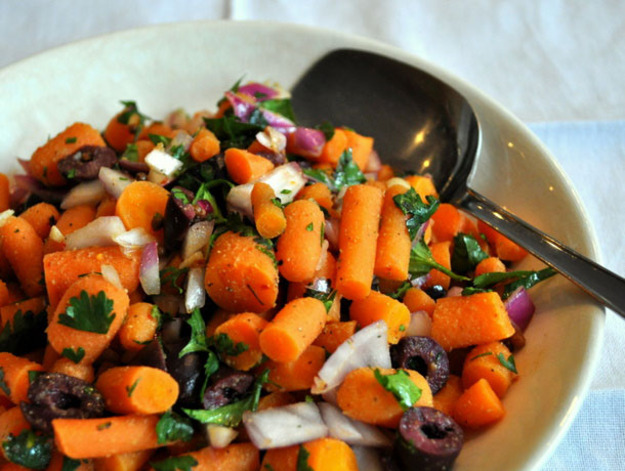
Ingredients:
- 2 cloves garlic, finely chopped
- 1 tsp coriander seeds
- 1/4 teaspoon crushed red pepper flakes
- 1 pound carrots peeled and cut into 1/4 inch pieces or 1 pound baby carrots, cut into thirds
- 1/4 cup water
- 2 tsp ground cumin
- 2 tbsp olive oil
- 2 tbsp fresh lemon juice
- 3/4 cup olives, pitted and cut in half
- 3/4 cup chopped red onion
- 1/3 cup cilantro, chopped
Directions:
1. In a medium saucepan, combine garlic, coriander, red pepper, and carrots. Cover with water. Let come to a boil over high heat. Reduce heat to medium and cook until carrots are crisp but can be easily pierced with a fork, about 15 minutes.
2. Pour carrots into a large bowl. Add red onion, olives, and cilantro. Toss to blend.
3. In a small saucepan over medium heat, toast cumin until fragrant, 1 minute. Take off heat and add lemon juice and olive oil. Pour cumin mixture over carrots and olives. Toss to blend. Season with salt and pepper.
Sweet Potato Kugel (8 servings)
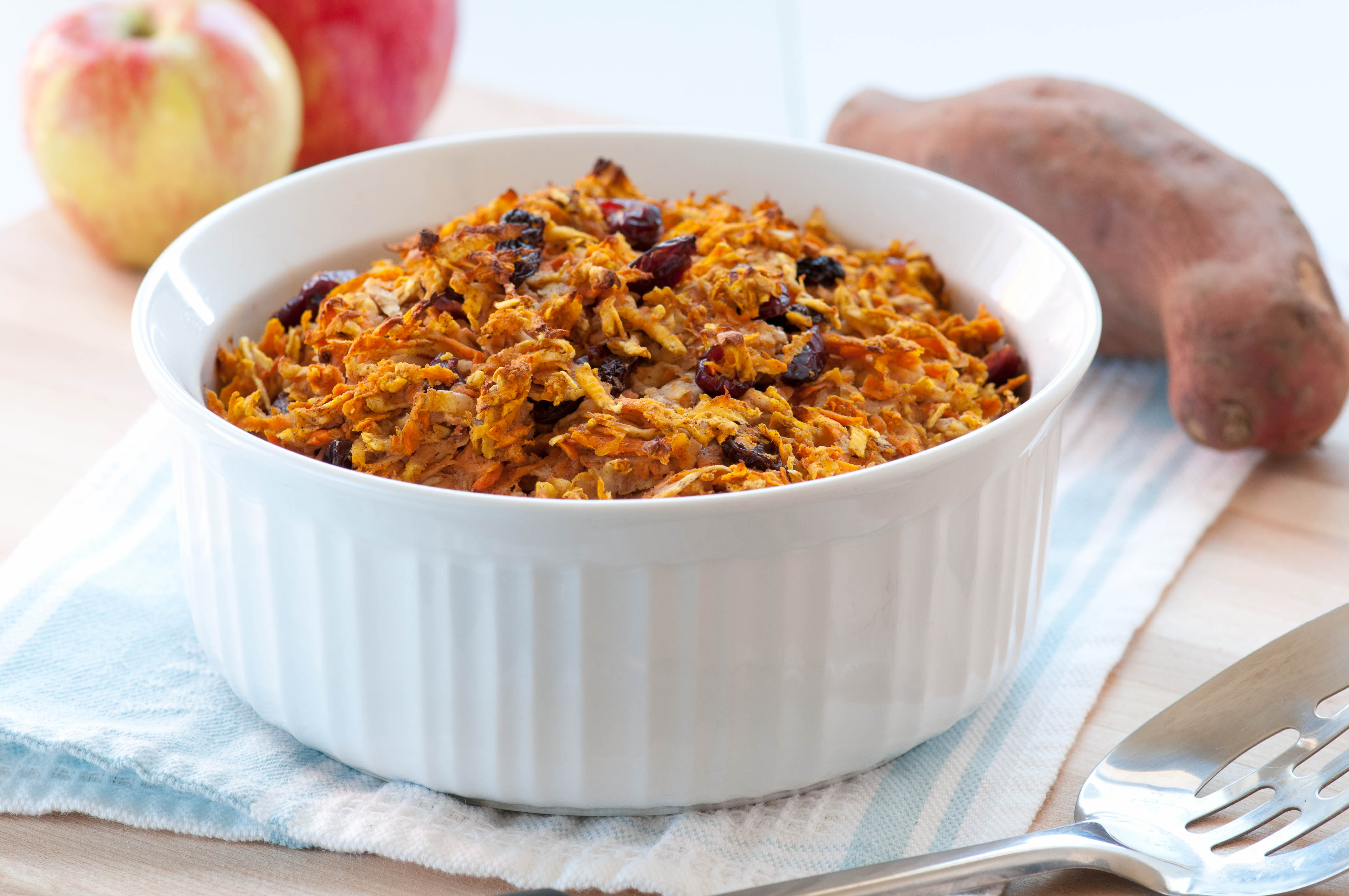
Ingredients:
- 3 large sweet potatoes
- 1 crispy apples
- 3 eggs
- 1 cup raisins
- 1/4 cup orange juice
- 1/2 tsp salt
- 1 tsp cinnamon
- 1/2 tsp ginger
- 1/2 tsp nutmeg
- 1/2 tsp cloves
Directions:
1. Spray cooking oil to grease pan.
2. Heat oven to 375 degrees. Spray an 8 inch pan or round baking dish with cooking spray. In a small bowl soak the raisins in orange juice, adding water so the raisins are covered.
3. Peel the potato. Using a grater blade on a food processor or box grater, grate them. Put the grated potato in a large mixing bowl. Beat the eggs and mix them into the potato. Grate the apples and add to the potato and eggs mixture. Stir in the salt and spices.
4. Add the raisins and soaking liquid.
5. Pour/scoop mixture into the baking dish, smoothing flat.
6. Bake about 40 minutes until the edges get slightly brown and the top gets golden. Let it cool and scoop out to serve.
Garlic-Roasted Chicken with Carrots and Parsnips Recipe (4 servings)
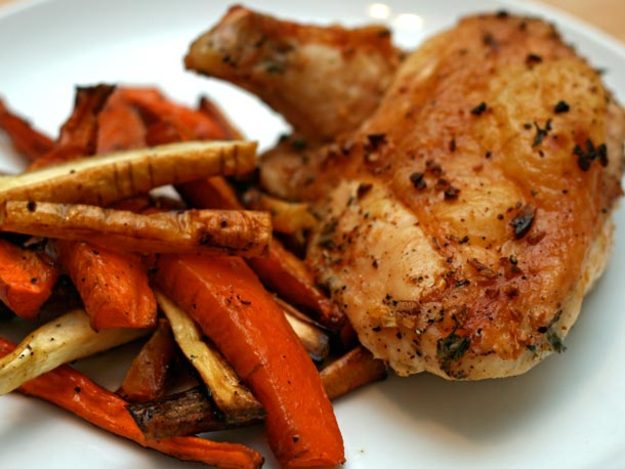
Ingredients:
- 4 bone-in skin-on split chicken breasts (6 to 8 ounces each)
- 7 carrots, peeled and cut into 2-inch sticks
- 7 parsnips, peeled and cut into 2-inch sticks
- 2 whole heads of garlic, broken into unpeeled cloves, plus three cloves, minced
- 2/3 cup olive oil
- 2 teaspoon kosher salt
- 1 tsp freshly ground black pepper
- 1 tbsp picked thyme leaves
Directions:
1. Preheat oven to 400°F. Line sheet pan with aluminum foil and spread out chicken skin side up, carrots, parsnips, and garlic cloves in single layer. Drizzle everything with olive oil, then sprinkle evenly with salt, pepper, and thyme leaves. Rub chicken pieces with minced garlic.
2. Transfer sheet pan to oven and roast until chicken registers 155°F on instant read thermometer and vegetables are tender, about 40 minutes, basting the chicken with the pan juices and tossing the vegetables once or twice during cooking. Cooking time may vary depending on size of chicken breasts. Monitor closely and add or subtract time as necessary. Allow chicken to rest 10 minutes after removing from oven and serve immediately with roasted vegetables.
Honey Cake
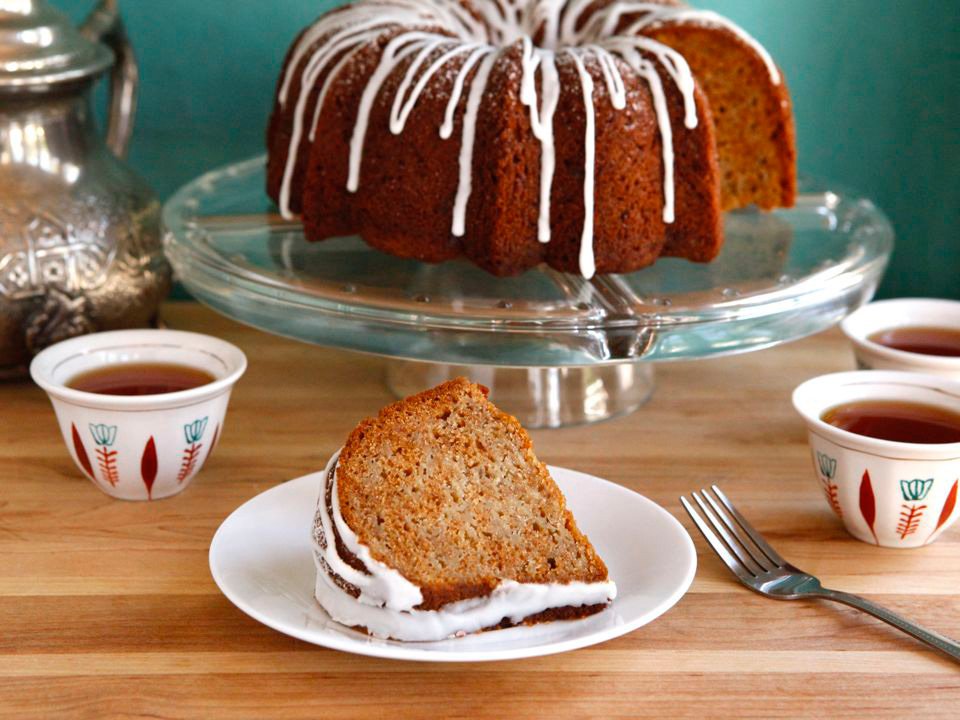
Ingredients:
- 1 cup very strong coffee
- 1-3/4 cups honey
- 4 extra large eggs
- 1-1/4 cups packed dark brown sugar
- 3-1/2 cups unbleached flour
- 1 tbsp. baking powder
- 1 tsp. baking soda
- 1 tsp. cinnamon
- 1/2 tsp. ginger
- 1/4 tsp. cloves
- 1/4 tsp. nutmeg
- 1 cup whole or half plain or candied almonds
- 1 cup raisins
- 1 1/2 tsp vanilla
Directions:
1. Preheat oven to 300 degrees. Grease and flour 2 9×5 inch loaf pans or one 9×13 pan. Set aside.
2. In a saucepan, combine the honey and coffee and bring to a boil. Cool and set aside.
3. In a large mixing bowl, blend the eggs, brown sugar and oil. Do not over beat.
4. Sift the flour, baking powder and baking soda and spices together. Stir the flour and honey into the eggs alternating and ending with the liquid. Stir in the raisins. Blend well. Pour into the prepared pans and place the almonds over the cake.
5. Bake for 60-70 minutes or until the cake springs back. Let sit overnight before serving.




